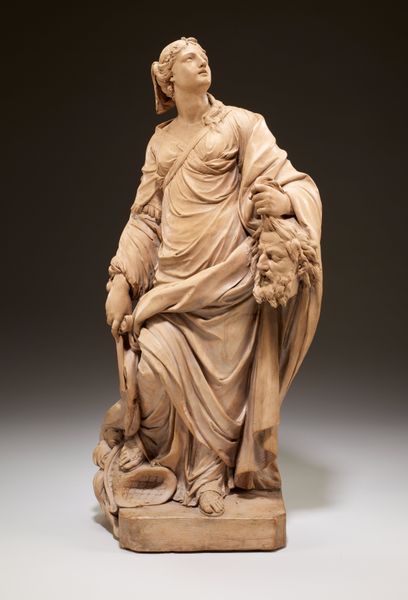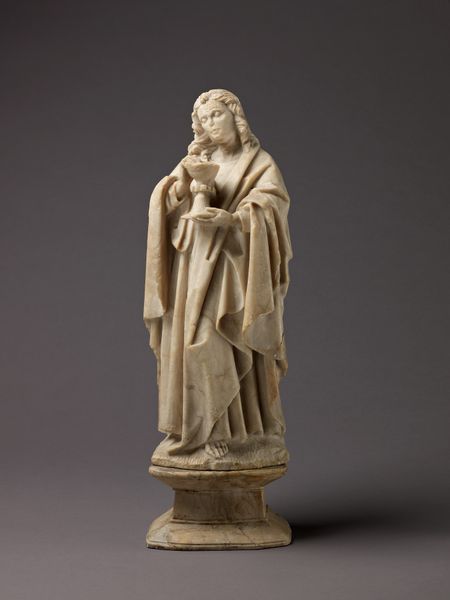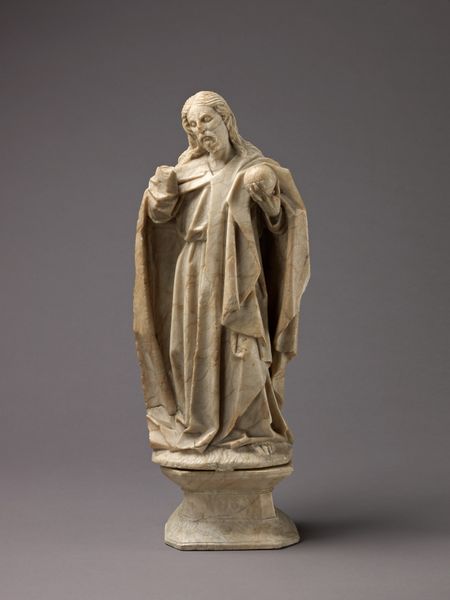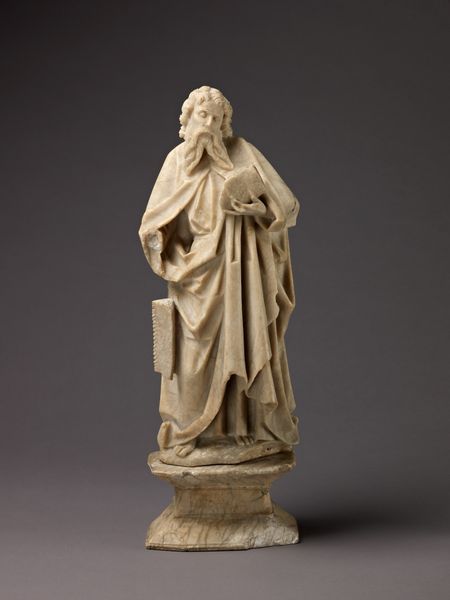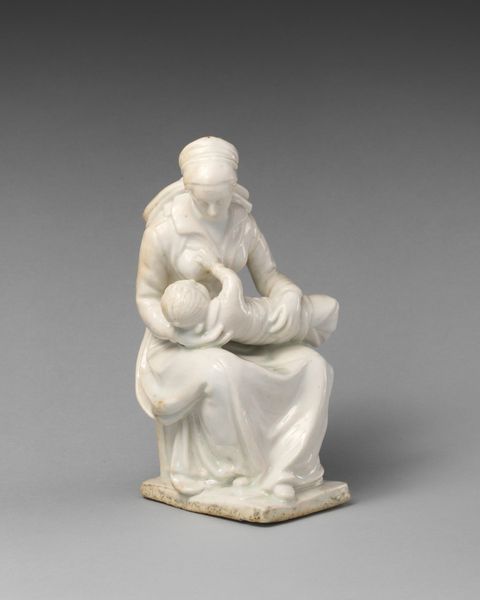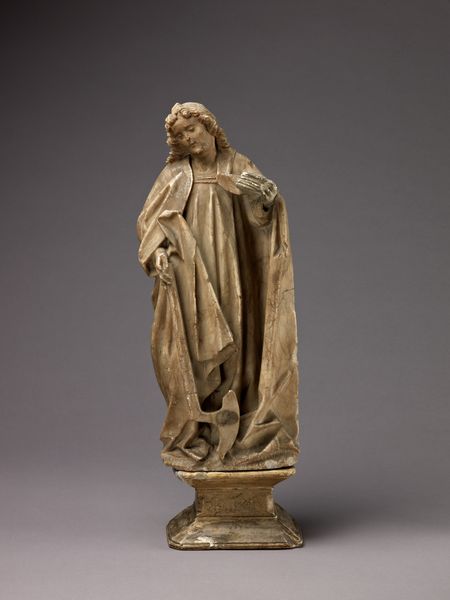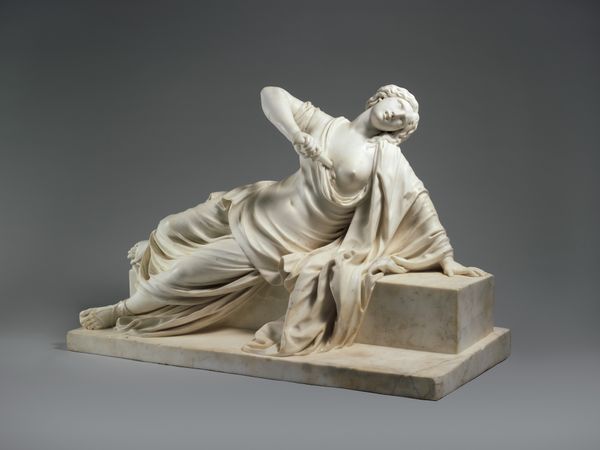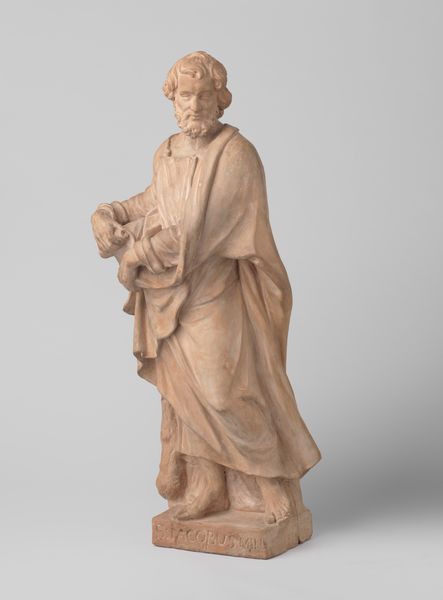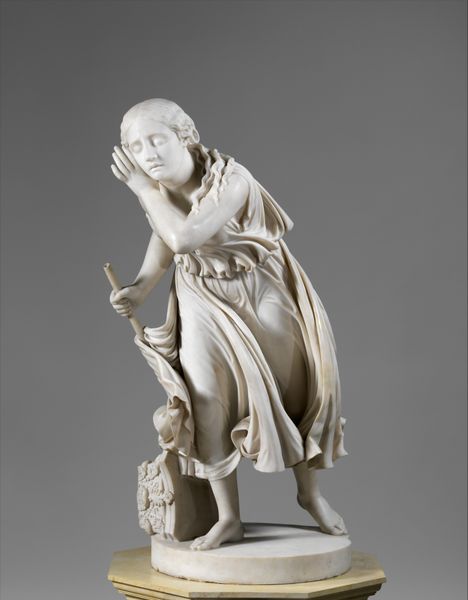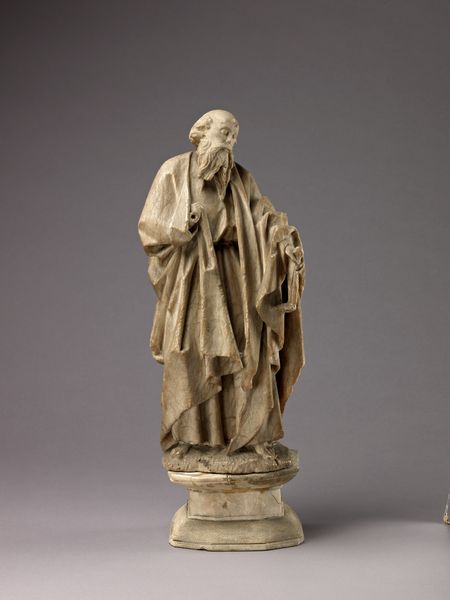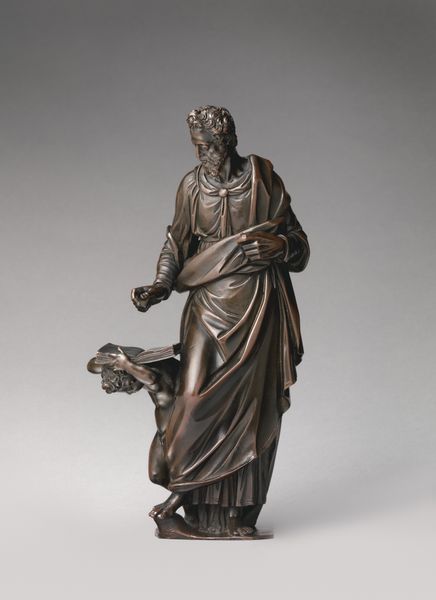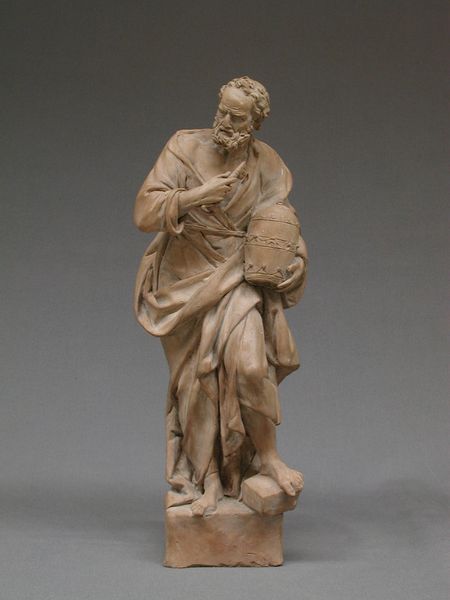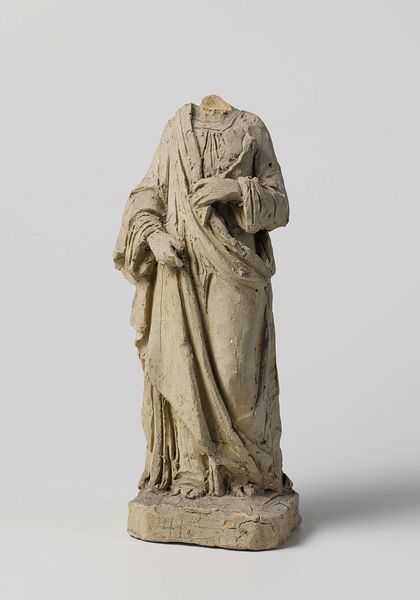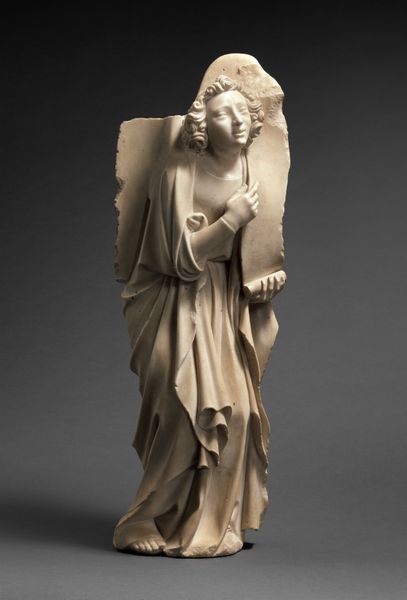
Dimensions: 18 3/8 x 9 1/2 x 8 1/2 in. (46.67 x 24.13 x 21.59 cm)
Copyright: Public Domain
Curator: Here we see Jean-Baptiste Stouf’s "Saint Vincent de Paul," crafted around 1787, rendered in terracotta. The sculpture now resides in the Minneapolis Institute of Art. Editor: The immediate sense is of pathos and quiet humility, primarily conveyed by the bent posture of Saint Vincent. It almost feels like a study in downward motion, echoed even in the subtle folds of his drapery. Curator: The downward gaze aligns perfectly with St. Vincent's historical role, wouldn't you agree? Founder of the Congregation of the Mission and known for his charitable works, particularly among the poor and abandoned. Stouf has certainly captured the ethos through careful sculpting of his form. Editor: Yes, observe how Stouf organizes the composition itself. The arrangement of figures suggests a descending movement: The saint's eyes lead downward, followed by his arm and finally to those small, abandoned children. What about the artist’s rendering of light? Notice how it glides off the draping—a play that amplifies the movement and drama characteristic of the Baroque. Curator: That's correct. This naturalism also extends to St. Vincent's face. See those etched lines? Stouf avoids idealization. He favors raw emotion, portraying St. Vincent with vulnerability instead. That makes the message even more powerful to its audience, emphasizing how vital charity truly is. Editor: I can certainly see your interpretation of naturalism there, though I find the uniformity in terracotta—the near monochrome of its appearance—somehow diminishes the potential emotional variance. I am drawn more toward Stouf's skill at modelling forms and lines, and the interplay between surface textures throughout, particularly the coarse base versus smooth drapery. It also strikes me as a commentary on how we use art to create heroes within socio-religious institutions. Curator: True. It's that tension that makes engaging with it so rewarding. I'm reminded once more of how integral socio-historical and political context is in understanding its total function and meaning, especially when you focus less on the visual form and how to read it based solely on those qualities. Editor: Ultimately, both of our ways of looking offer complementary ways of experiencing the complexities embedded within its material and historical self. Curator: Precisely. And those are valuable ways in approaching an artwork like Stouf's “Saint Vincent de Paul”.
Comments
minneapolisinstituteofart almost 2 years ago
⋮
Saint Vincent de Paul (1581–1660) dedicated his life to helping the poorest of the poor in France, including abandoned and abused children. About a hundred years later, during the Enlightenment, when the French celebrated scientific reasoning and individual liberty, he was one of the few religious personages honored with a statue in the Great Men of France series, installed in the Louvre’s Grande Galerie. This terra-cotta model is the only record of Stouf’s first proposal for the statue. Severely criticized for showing only the saint’s compassion and not his active deed of charity, Stouf modified the sculpture. His final version shows the saint lifting a child off the ground, symbolizing the children’s salvation.
Join the conversation
Join millions of artists and users on Artera today and experience the ultimate creative platform.
